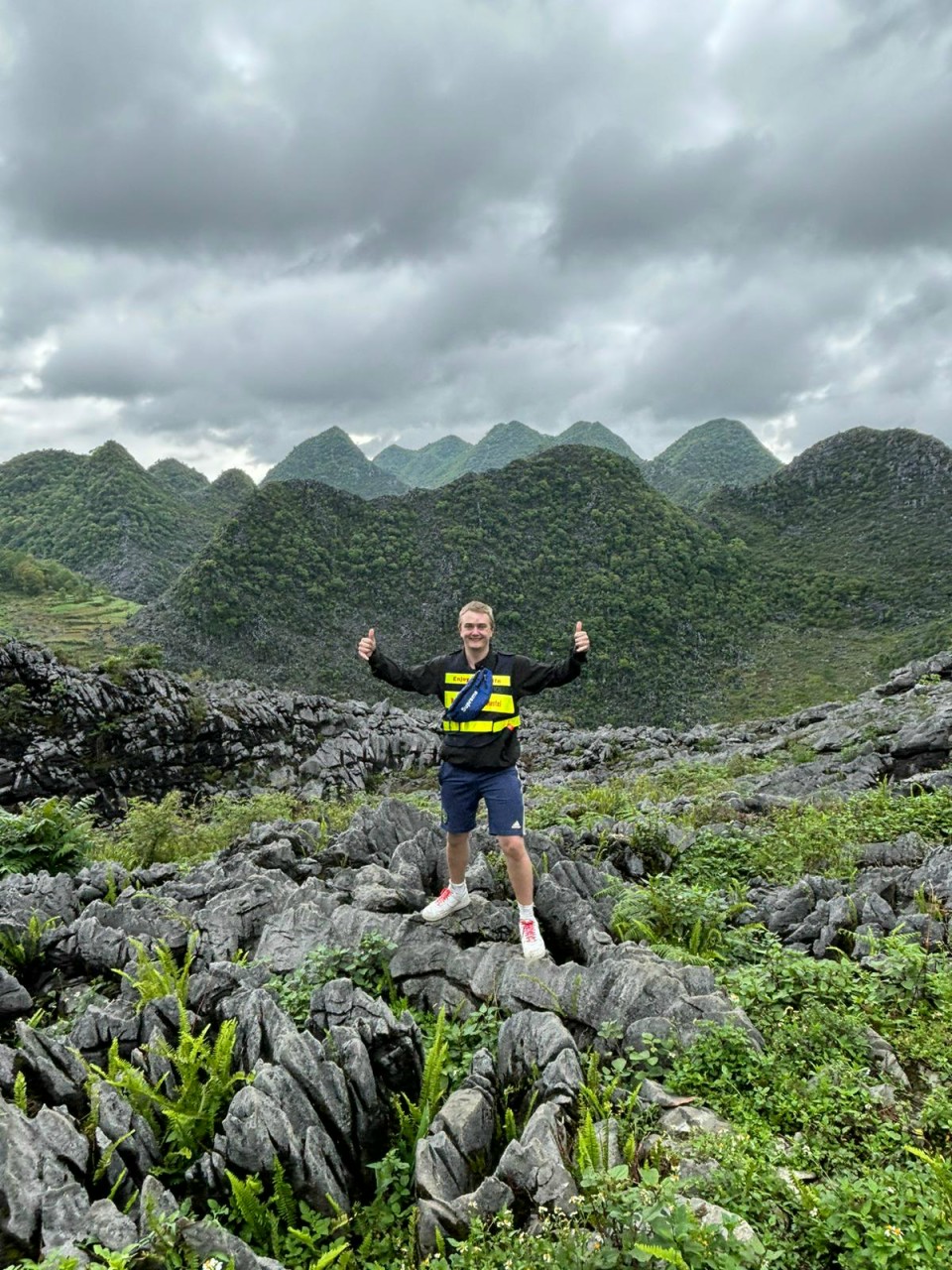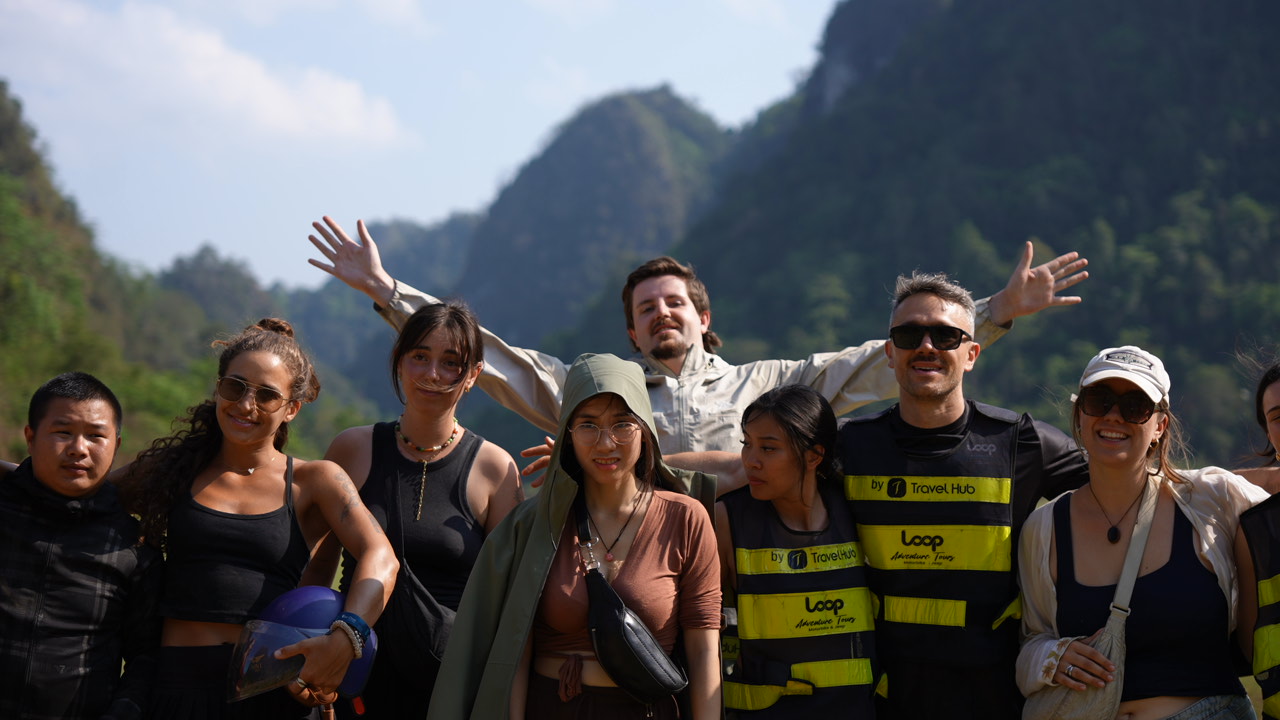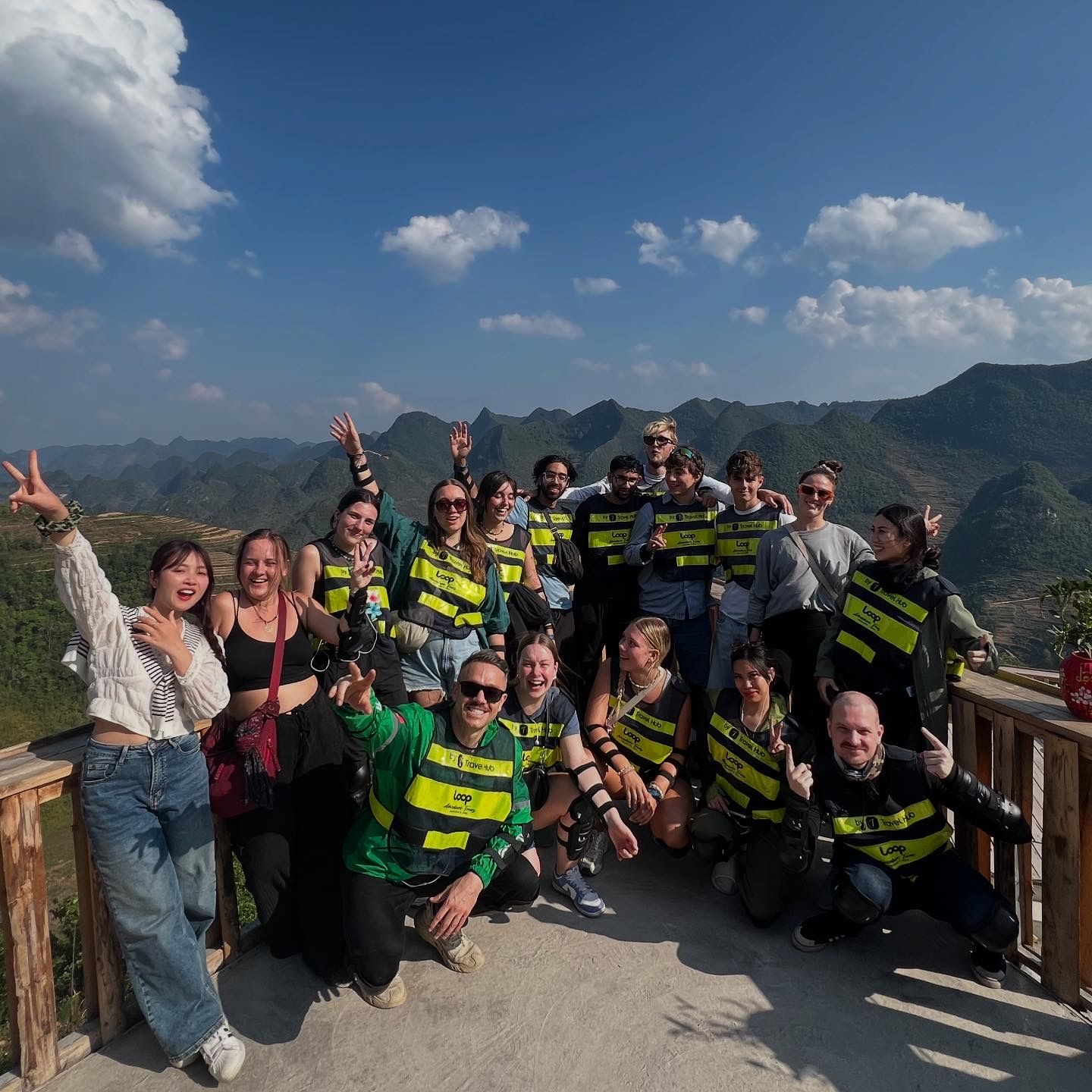If January in the far north feels austere, Ha Giang in February is the soft turn toward spring: cool mornings, gentler afternoons, and the first flush of peach and plum blossoms on stone-walled villages. Road conditions are typically drier than the summer monsoon, while crowds remain manageable outside Lunar New Year peaks. This guide covers real-world weather expectations, pros and cons, 2–4 day itineraries, packing advice, costs, safety and FAQs—so you can plan the Ha Giang Loop with confidence.
Recommended Tours for You:

What the weather feels like in February
-
Temperature: usually cool. Mornings/evenings can dip to single-digit °C at altitude, while daytime highs often sit in the low-to-mid teens °C (50s–60s °F). Wind on passes like Ma Pi Leng can make it feel colder.
-
Sky conditions: a mix of bright, crisp days and patchy fog/low cloud in early hours—often clearing by late morning. Short drizzles are possible; prolonged, heavy rain is uncommon versus summer.
-
Daylight: still shorter than in spring/summer; plan daylight-only riding or driving.
Bottom line: Ha Giang in February is cool and photogenic—with blossom color and softer light—ideal for travelers who prefer calm roads over peak-season bustle.
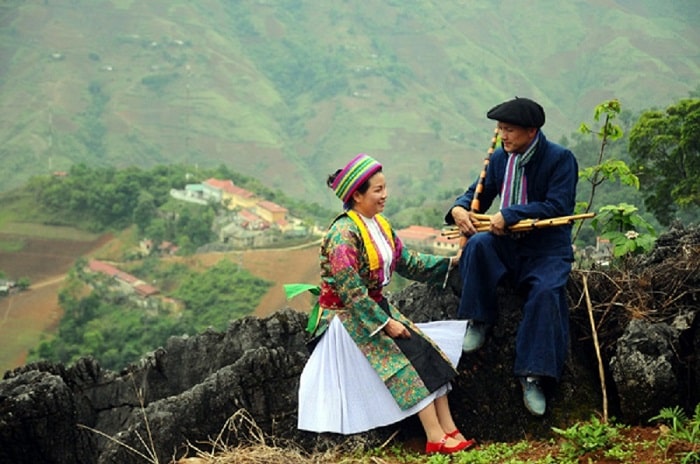
Pros & cons of visiting Ha Giang in February
Pros
-
Blossom season: peach/plum blooms frame karst ridges and stone houses—beautiful village photography without summer haze.
-
Manageable crowds: after New Year holidays, availability of good bikes/rooms improves and prices stabilize.
-
Comfortable riding: cooler air and generally dry surfaces (vs. the wet season) reward daylight planning.

Cons
-
Chill on high passes: windchill can bite; wool layers and a windproof shell are essential.
-
Morning fog: may delay departures; keep a spare hour in the schedule.
-
Holiday caveat: if Tet (Lunar New Year) falls in February, transport, dining hours and prices can fluctuate for a few days—book early and expect limited services on holiday dates.
How to get there & move around
-
Hanoi → Ha Giang City: most travelers use an overnight sleeper bus or VIP-cabin bus (roughly 6–7.5 hours). Day limousine options exist but reduce riding time.
-
Tour styles:
-
Easy Rider (pillion): ride behind a licensed local—best for beginners and cold mornings.
-
Self-ride (guided group): semi-auto/manual 110–150cc following a lead guide; carry your license + IDP and insurance.
-
Car/van with driver: warm, dry, and safest in fog; perfect for families and photographers with gear.
-

February-friendly itineraries (2–4 days)
2D1N Highlights (fast but feasible)
Day 1: Ha Giang → Quan Ba Heaven’s Gate & Twin Mountains → Yen Minh pines → Sung La Valley → Vuong Family Palace → Dong Van (Old Quarter).
Day 2: Morning Lung Cu Flag Tower → Ma Pi Leng Pass sky paths → optional Nho Que River boat → Meo Vac → return Ha Giang.
Why it works in Feb: short daylight blocks, essential viewpoints, and blossom villages en route.
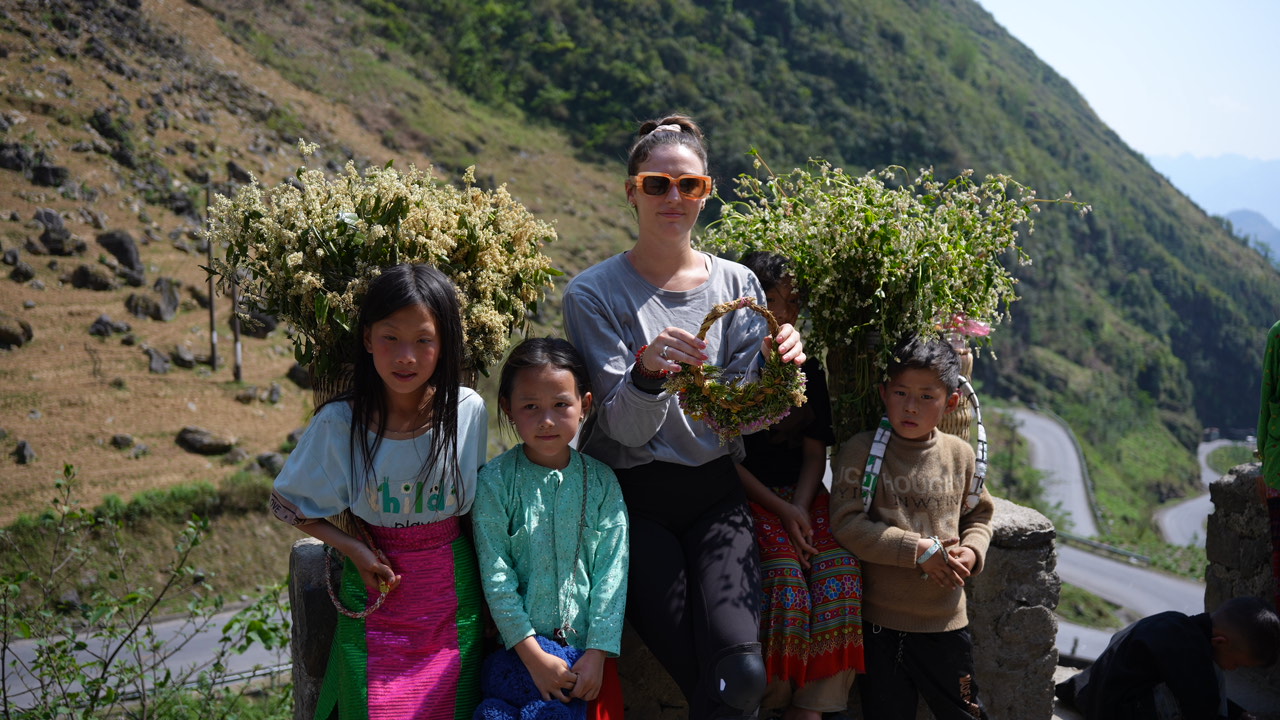
3D2N Classic (best value)
Day 1: Ha Giang → Quan Ba → Yen Minh → Dong Van (sunset in Old Quarter).
Day 2: Lung Cu morning → Ma Pi Leng viewpoints → Nho Que boat (carry a windproof layer) → Meo Vac (family dinner).
Day 3: Meo Vac → Du Gia waterfalls/short trek (conditions permitting) → Ha Giang → night bus to Hanoi.

4D3N Slow Travel (photographer’s pace)
Add sunrise in Lo Lo Chai, extend cultural time in Nam Dam (Dao village), and build in coffee/photo stops that take advantage of February’s gentle light.

What to see & do in February
-
Blossom villages: lanes around Dong Van, Lung Tao, Lo Lo Chai are especially photogenic—ask permission before close portraits.
-
Ma Pi Leng & Tu San Canyon: with softer winter light, cliffs gain texture; fog often lifts by mid-morning for grand views.
-
Markets: Sunday markets in Dong Van or Meo Vac burst with color—textiles, herbs, and winter produce.
-
Comfort foods: au tau porridge, hotpots, and grilled corn are perfect post-ride warm-ups.
-
Nho Que River boat: calmer flows and dramatic canyon walls—bring gloves and a windproof shell.

Costs: what to budget (per person, reference ranges)
-
Motorbike rental: ~180,000–300,000 VND/day; fuel ~60,000–120,000 VND/day.
-
Easy Rider group tours (3D2N–4D3N): ~2.6–6.5M VND (bike/driver, fuel, homestays, some meals).
-
Self-ride guided packages (3D2N–4D3N): ~3.2–5.8M VND (often includes bike, fuel, guide, basic gear, homestays).
-
Car/van with driver: ~2.5–5.0M VND per vehicle/day (split among 4–10 travelers).
-
Add-ons: Nho Que boat 100k–150k VND; small entrance fees (Lung Cu/Vuong Palace).
-
Holiday note: if Tet falls in February, expect temporary surcharges and tighter availability—reserve early.
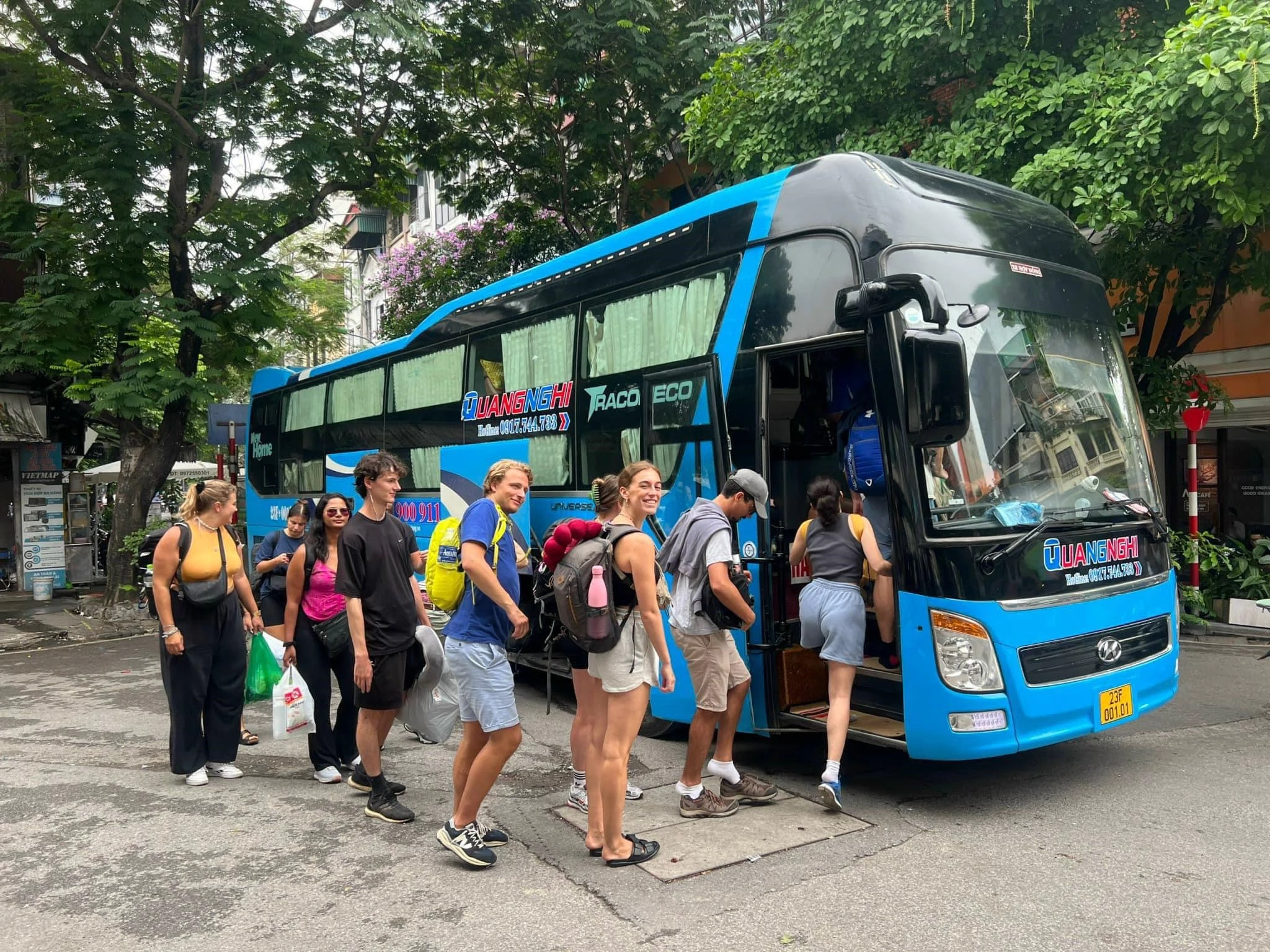
Packing list for Ha Giang in February
-
Warm layers: thermal base, mid-layer (fleece or light down), windproof/water-resistant shell.
-
Accessories: insulated gloves, beanie/neck gaiter, thick socks, lip balm, hand warmers (optional).
-
Riding basics: certified helmet, gloves with grip, long sleeves/pants, sturdy shoes; compact rain jacket and pack cover.
-
Essentials: sunscreen (UVA matters year-round), sunglasses, refillable bottle, quick-dry layers, small bills (5k–50k VND).
-
Tech & docs: phone mount, power bank, driver’s license + IDP (if riding), travel insurance details.

Safety & etiquette (especially useful in late winter)
-
Daylight only. Fog + hairpins + livestock at dusk are avoidable risks.
-
Cornering: look through the turn; use engine braking on descents; avoid hard braking on damp corners.
-
Daily bike check: tires, brakes, lights, horn, and chain before departure.
-
Culture & markets: ask before photographing people, dress modestly, and support local vendors; pack out trash.
-
Border areas: keep ID handy; follow guide instructions at checkpoints.
-
Weather buffer: plan at least one spare hour per day to wait out fog.
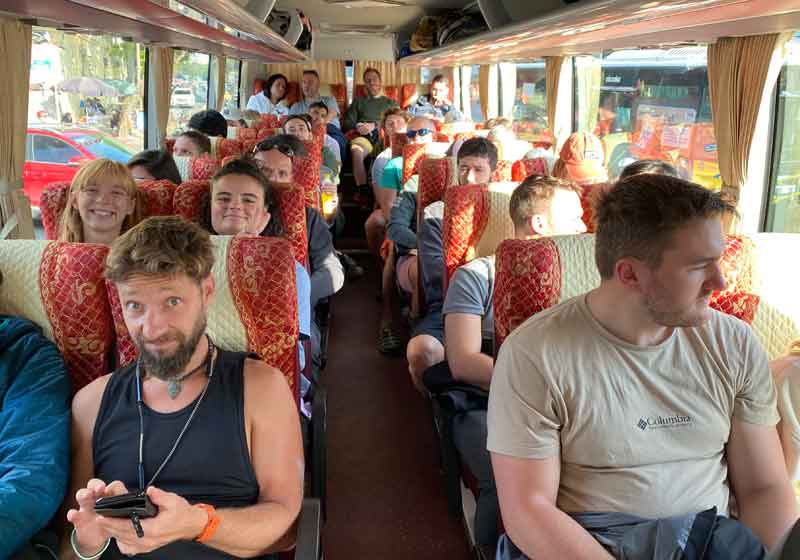
Photography tips for February
-
Use side-light: low-angled sun sculpts the limestone at Quan Ba and Ma Pi Leng.
-
Fog patience: a 20–40 minute pause can turn whiteout into cloud-sea drama.
-
Colors pop: blossoms and textile markets contrast beautifully with gray stone—shoot in RAW if possible.
-
Keep batteries warm: cold drains power quickly; rotate spares in an inner pocket.
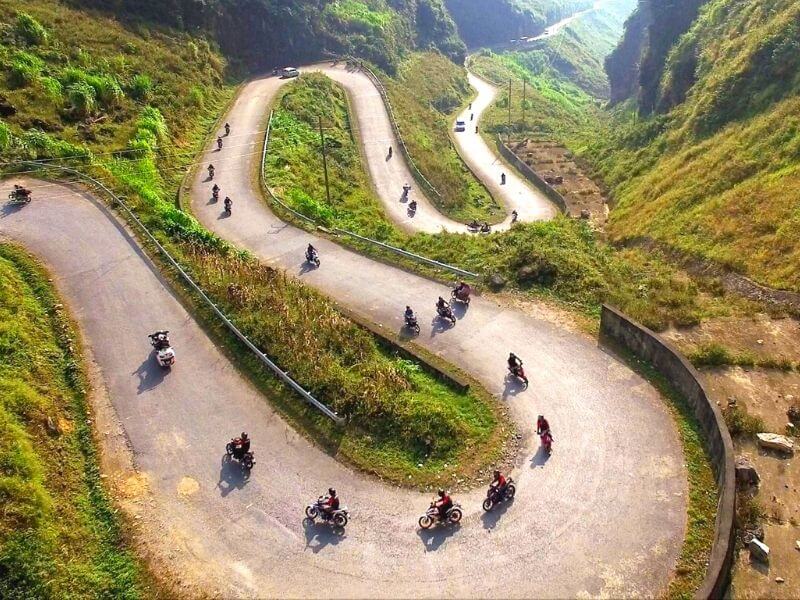
FAQs – Ha Giang in February
Is it too cold to enjoy the Loop?
It’s cool-cold, not extreme. With thermals and a windproof shell, most travelers are comfortable—especially in a car/van or as an Easy Rider pillion with warm tea stops.
Are blossoms guaranteed?
Bloom timing varies by microclimate and year, but February is generally reliable for peach/plum blooms around highland villages.
Can beginners self-ride?
Possible, but Easy Rider or car/van is safer if you have limited mountain experience or dislike chilly starts.
Will everything be open during Tet?
On holiday days some services close or run limited hours; book buses/rooms early and be flexible with dining options.
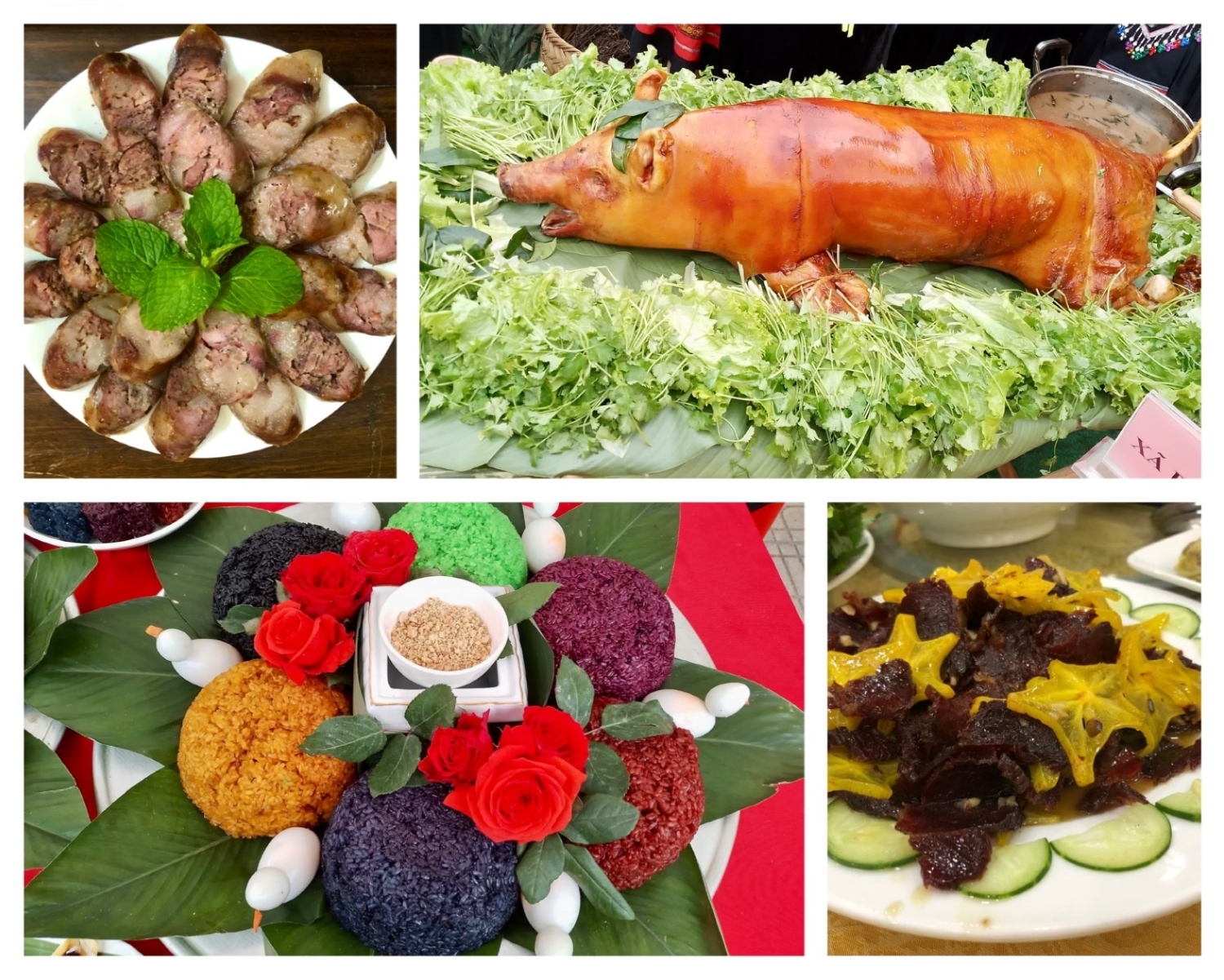
Conclusion
Ha Giang in February blends the quiet focus of late winter with the optimism of early spring: blossom-lined lanes, gentler light, and manageable crowds. Plan for daylight travel, pack warm layers + a windproof shell, and choose the tour style that matches your comfort—Easy Rider, self-ride, or car/van. Build a small weather buffer into each day, book key stays in advance if Tet overlaps your dates, and travel respectfully in border villages. Do that, and February will deliver what Ha Giang does best: cliff-line horizons on Ma Pi Leng, stone-walled alleys in Dong Van, and a camera roll of soft-toned, blossom-framed memories that feel unmistakably northern Vietnam.
Plan your adventure today! For more details and personalized support, contact Thelooptours Hotline: +84329196074.



